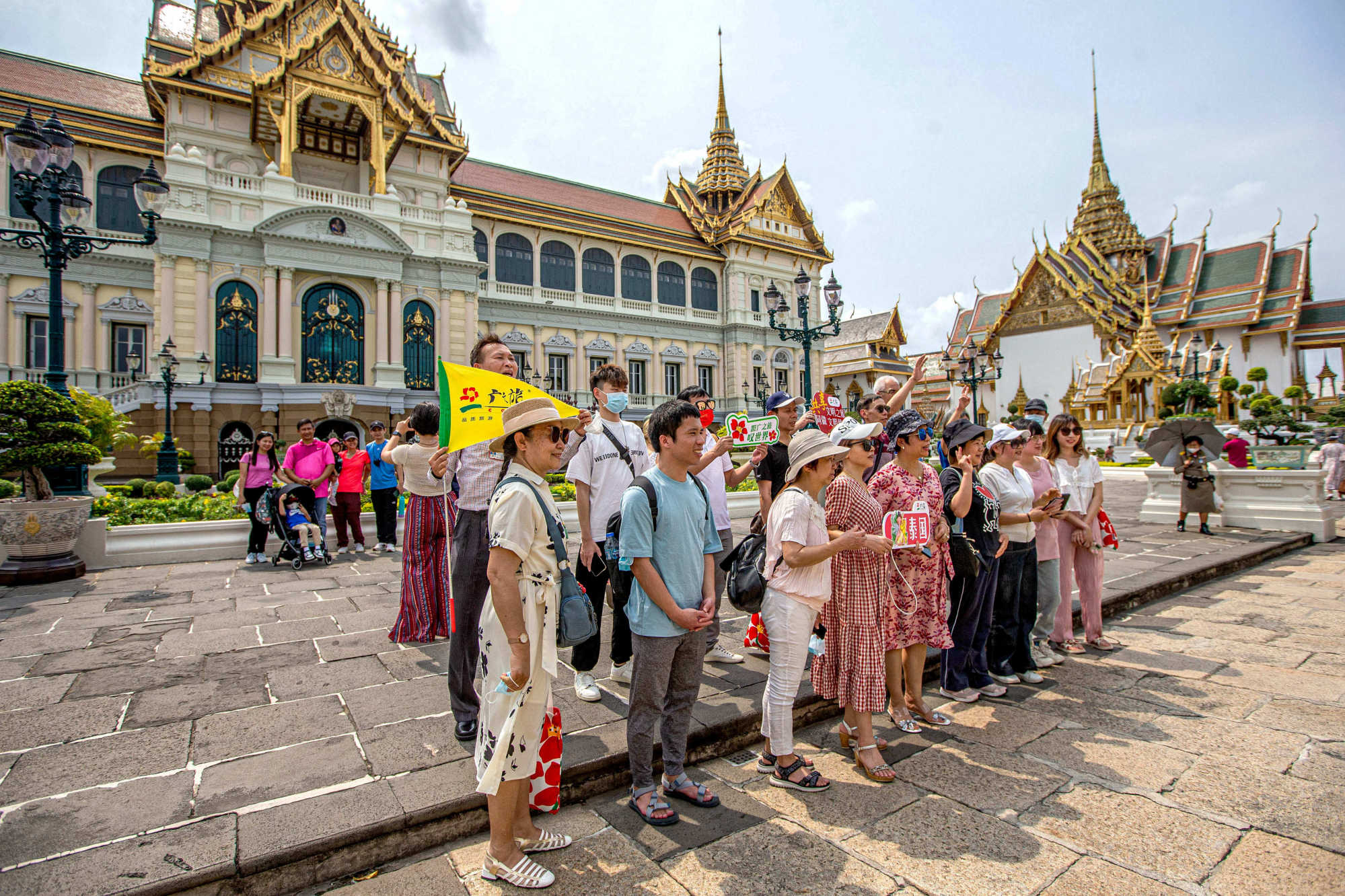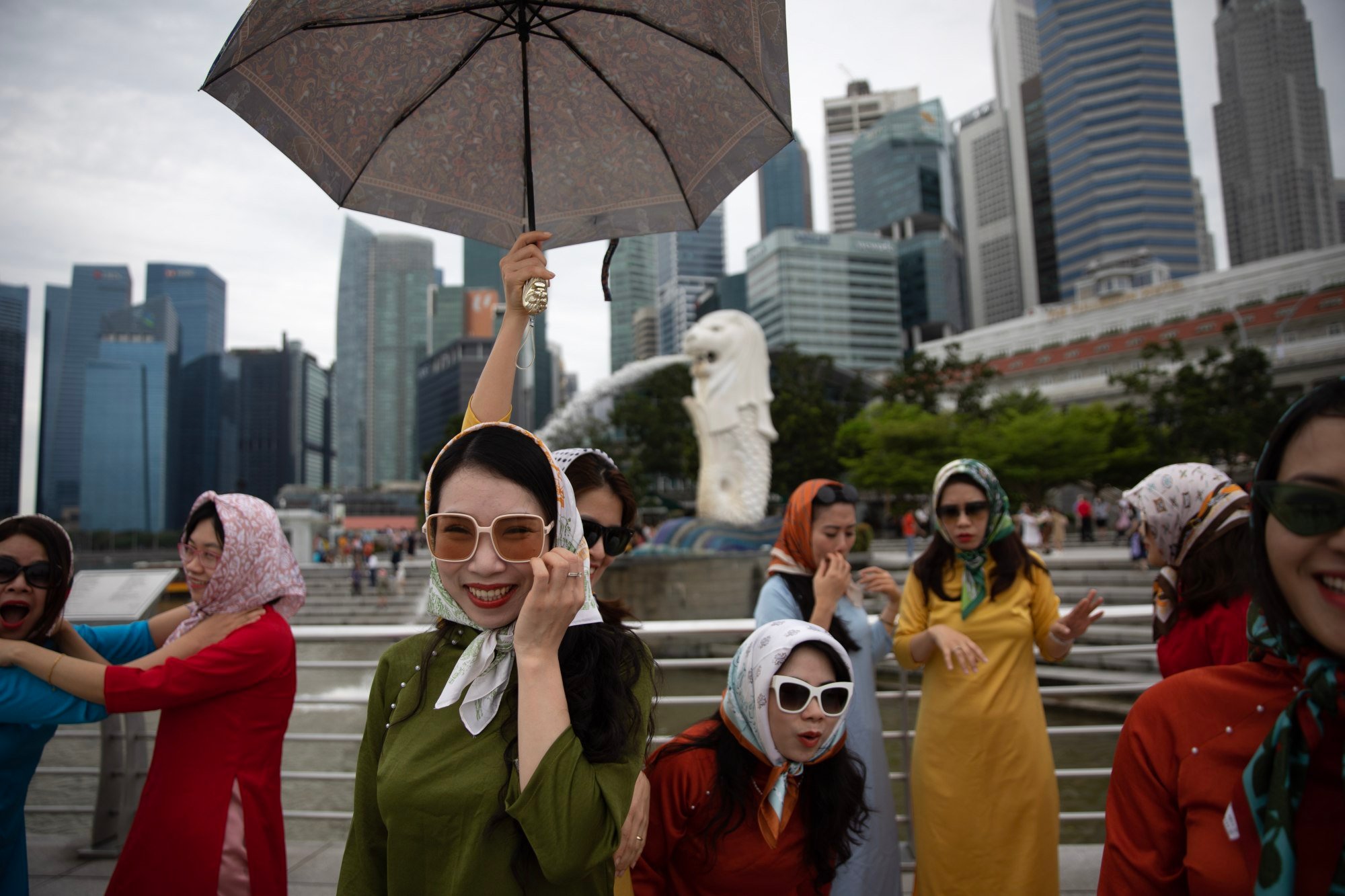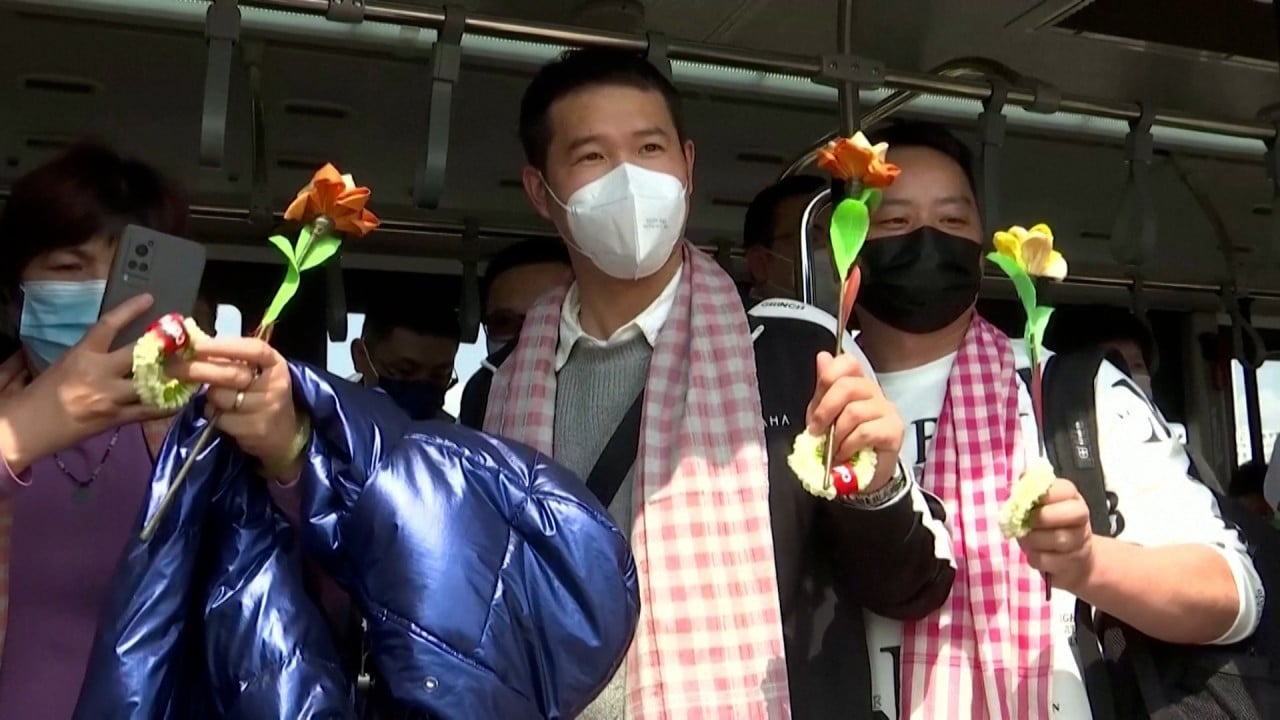
Chinese travellers shunning tour groups for free and easy trips to Southeast Asia
- Factors such as the shortage of direct long-haul commercial flights are encouraging young tourists to plan their own adventures in Southeast Asia
- While many flight routes will slowly come back, tourist businesses in the region detect a longer-term trend away from large group experiences
The trip was even more rewarding because the cousins had reserved it themselves.

But the cousins are part of a post-pandemic cohort chasing bespoke holidays that offer value and different experiences from bus hopping photo-ops, set-menu restaurants and quick stops on packed beaches.
“Thailand is close, easy to get [a] visa and it’s warm,” said Hubin after a day of snorkelling and jet-skiing around an island just off Pattaya.
Younger, armed with apps and with more than enough funds to go it alone after three years at home, so-called free and independent travellers (FITs) like the Huang cousins are back across Southeast Asia, seeking adventure, local food, the chance to hype their social media and take a little risk beyond the confines of a tour.
Hong Kong and Macau lead Asia travel recovery, as Chinese tourists return
The kingdom’s tourism-dependent economy, slowly recovering from the pandemic, is looking for a boost from the return of Chinese visitors. They could help drive employment in an economy expected to grow by around 3.7 per cent this year, analysts say.
But a fortnight since tour groups were also allowed to travel outside China, only a trickle have returned, worrying tour operators in Thailand and beyond who had expected a quicker bounce back of Chinese mass tourism.
“It’s not like before Covid when we would need a few buses for each group,” Uzaidi Udanis, the president of the Malaysian Inbound Tourism Association (MITA) told This Week in Asia. “The average size now will be about 20 pax per group.”
The absence is due in part to the shortage of direct long-haul commercial flights linking to the Chinese mainland after years of closed routes, Uzaidi said.
While many routes will slowly come back online reaching mid-tier cities, where China’s middle-class await the chance to leave the country, tourist businesses detect a longer-term trend away from large group experiences.
Slow recovery
“I hope travel agencies will bring them here soon, so we can also enjoy the benefit [of their comeback],” said Agung Putra, who sells drinks by Kuta’s iconic beachfront.
According to Indonesia’s statistics agency, nearly 1.2 million Chinese tourists visited Bali in 2019, about one-fifth of the 6.2 million total foreign arrivals that year. Comparatively, Bali’s Vice-Governor Tjokorda Oka Artha Ardana Sukawati said the island has only received about 10,000 Chinese arrivals since the start of the year.
We have suggested to the government to open the routes connecting Bali to Guangzhou, Shanghai, and Beijing
The lack of direct connectivity between Bali and China will cramp the Indonesian government’s efforts to bring in 250,000 Chinese tourists this year, according to Putu Winastra, chairman of the Bali Association of Indonesian Tours and Travel Agencies.
“We have suggested to the government to open the routes connecting Bali to Guangzhou, Shanghai, and Beijing,” Putu said.

Just a handful of tourists from China were spotted visiting the landmark Merlion statue earlier this week, considered a “must-see” for visitors from the mainland.
An employee at Souvenirs N Gifts, who goes by her surname Woo, said before the pandemic Chinese tourists would arrive by the busload.
But now, the number has fallen to only one or two people a day.
“We can definitely feel the difference from pre-Covid days when there were many Chinese tourists coming in … we see a lot more tourists from other countries like Thailand and Australia,” she said.
Japan aims to smash tourism record in 2025 as travellers eye ‘dream holiday’
Major destinations like historic Angkor Wat remain popular for Chinese visitors, but they are no longer as spendthrift as before, Wing Kwoing said.
“They’ve changed from drinking one coconut per person to sharing between two or three people, and from eating at fancy restaurants with air-conditioning to places without,” he said.
Cambodia’s Tourism Ministry is aiming for between 800,000 to 1 million Chinese tourists this year.
Adventure time
However, this does not mean that Chinese tourists do not want to spend. On the contrary, they are more than willing to shell out for their travels – but on their own terms and with a growing focus on new experiences.
MITA head Uzaidi said tour operators registered with his association had been receiving plenty of inquiries from Chinese tourists, but for things they never would have considered in the past.
From jungle trekking to deep-sea sport fishing, slots are quickly being filled by intrepid travellers seeking thrills they may not necessarily experience back home.
Tour operators in neighbouring Singapore are also seeing growing demand for private tours from smaller Chinese travel groups keen on learning more about the country, according to Colin Goh, a tour experience manager at Let’s Go Tour Singapore.
“They want specific things and they’re very aware about what they want to do,” he said, adding that “they don’t want to blindly follow a tour guide”.
That will change the shape of the tourism sector, which is still trying to bounce back from brutal pandemic closures.
Badly behaved, ‘sinful’ tourists push Bali to debate limiting mountain access
Goh said this new clientele, typically families travelling in groups of five, prefer to decide on their itinerary in Singapore themselves – opting for tours in neighbourhoods like Joo Chiat, where they can learn more about the city state’s Peranakan culture.
And while Chinese tourists are coming in “dribs and drabs” at the moment, the numbers are expected to eventually grow over time.
“It takes time for the momentum to build – deciding and booking a long trip isn’t something done on the spur of the moment,” said Christopher Khoo, managing director of global tourism consultancy MasterConsult Services.
Uzaidi said that Malaysian tourism authorities estimate that the country will receive about 1 million arrivals from China this year based on enquiries fielded by MITA’s members, and expect some 1.5 billion ringgit (US$341 million) in total spending by Chinese tourists.
“We just hope our tourism players can keep up with the new trend and accommodate these kinds of new requests, especially focused on sports, adventure and eco-tourism,” he said.





